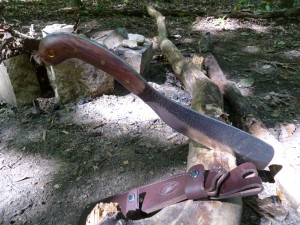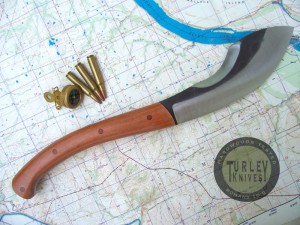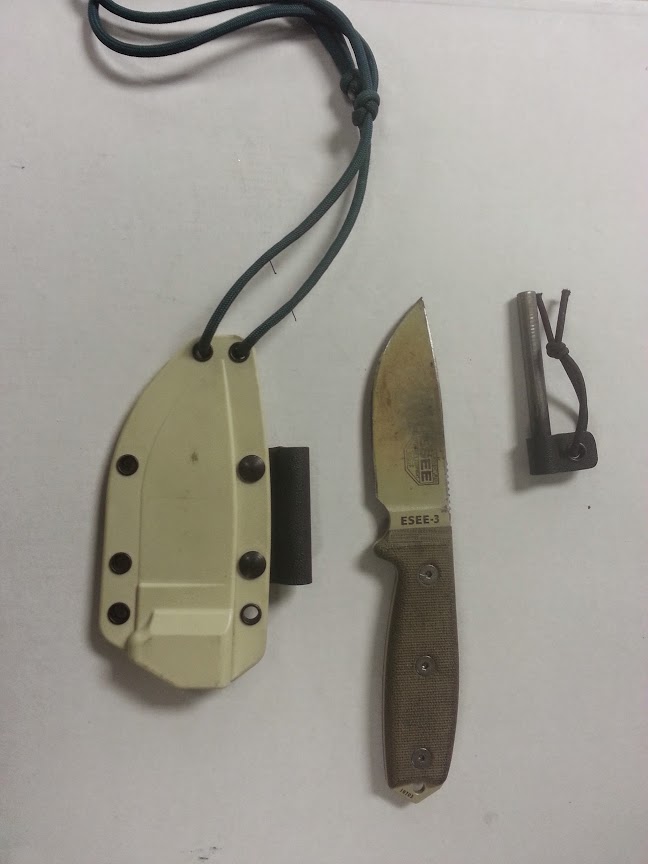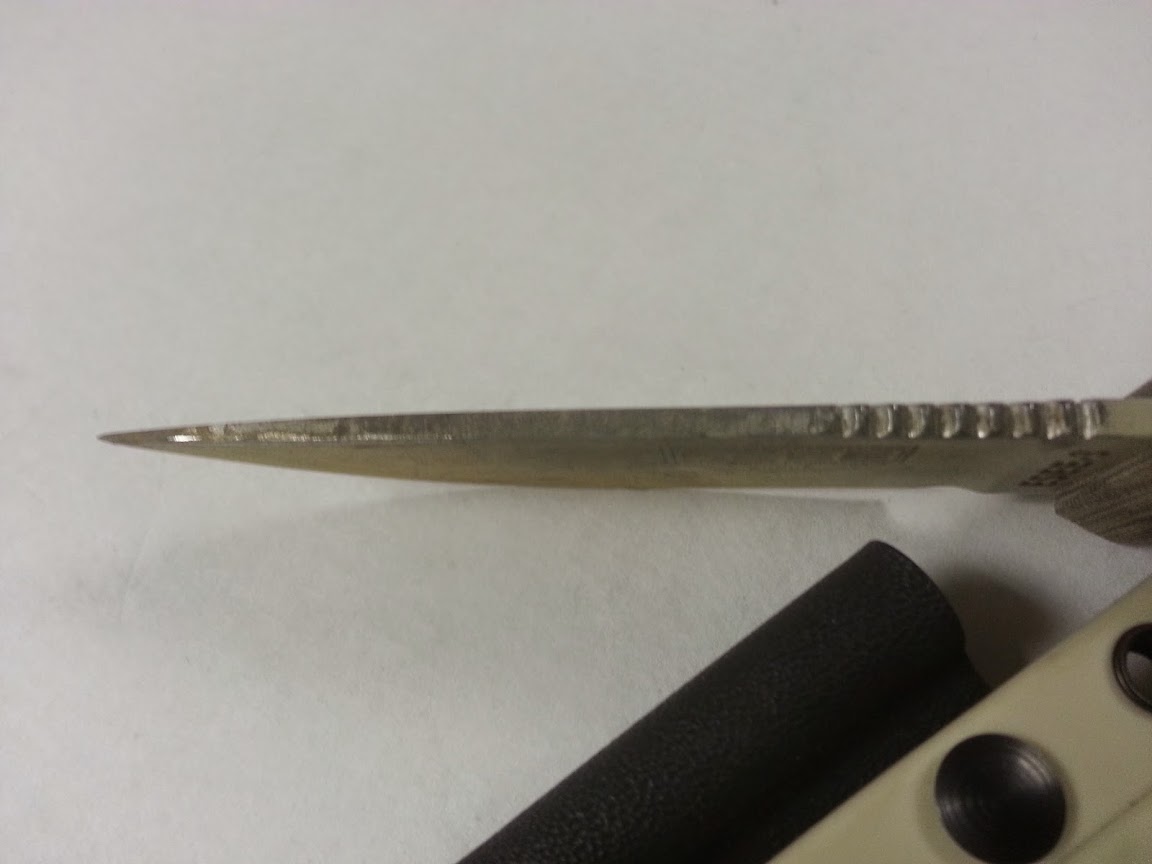by Woodsbum
I have been waiting for about 3 years for a Skookum Bush Tool from Rod Garcia and for right at 2 years for a SPL knife from Steven Long. Both of which were slotted to be my neck knives while I was out in the woods. Unfortunately, I am still a ways down the list for both of these creations so I finally decided that I needed to get something that would fit the bill until I got either of these customs. After searching the Internet and messing around with several different knives I set my heart upon a Scandi grind of some sort that had around a 4 inch or less blade, but was full tang and had a good handle to do minor wood processing and carving. What I found that I really thought would work well was the Helle Harding.
On Amazon these knives are around the $140 mark, but I got mine at a local shop for $125. This definitely fit within my price range and the size, feel and weight were exactly what I was looking for. The stacked handle adds almost no weight to the knife overall and the blade itself feels quite light and agile in my hand. The sheath is real leather and there is a retaining flap that locks the knife in place when sheathed. This really gave me increased peace of mind that I could wear this all day long and not worry about losing the knife somewhere along the way.
Everyone is going to have to forgive my pictures. Like almost every outing I have, I leave my phone in my vehicle and almost never take a fully charged camera with me. It has gotten to be an almost impossible task for me to remember that I need to take pictures. Because of this you guys are going to have to suffer with my impromptu photo session on my lunch break. I think even these pictures will allow you to see how well this knife performs on even the least perfect of situations.
Over the years I have become quite the fan of Scandi grinds. What I love most about them is how easily they cut through wood and make curls for fire starting. I am not sure if it is just how I use a knife or if it works this way for everyone, but I exert far less energy and pay way less attention to my technique when using a Scandi grind. These pictures will show you how easily I was able to make some feather sticks with a less than desirable wood choice. Considering this was all done during my lunch break, I was very happy with how well it sliced right through this water logged dead branch without chipping it up too much. Again, it was not a wood choice I would have made if I was not desperate to take some pictures for this post.
Feather Sticks
Mind you that this wood was at the initial starts of being punky. It was really right in that perfect spot where (if it was dry) you could make a very efficient bow drill set out of it. As a matter of fact I am going to set it aside and let it dry for a while, then carve out a spindle and hearth.
With almost no effort at all, this guy just sliced right through the wood and made nice curls. Most of them broke off at the end as you can see, but each cut curled multiple times. The sweet spot on this blade seems to be the entire cutting surface. There are no areas that seem to cut worse or better than another. It will be interesting how it performs once it dulls several times and I have to resharpen it. If it can keep the current cutting efficiency even after multiple sharpenings, I will be quite impressed.
Here is a better look at both the knife and how it cut this very brittle branch.
Cutting Power
The knife also works very well for field dressing animals harvested in the field. Well, it works quite well for the ducks I tested it on. I could see this as a field knife that would handle any task thrown at it, although like all general purpose items it would not excel at every task.
Overall I am quite impressed with this buy. The grind on the blade is a very capable feather stick maker, the agile feel to the blade allows for fairly intricate carving (although I am horrible at carving and refuse to show my poorly made spoons to anyone), it works fairly well for game processing, and the weight is negligible. If anyone I run into is looking for a mid sized knife to use for general camping chores I will now recommend this particular knife.
Now that I have picked this up I am concerned that I will have a hard time choosing between this and the two customs I have on order. Too many options!!!!







